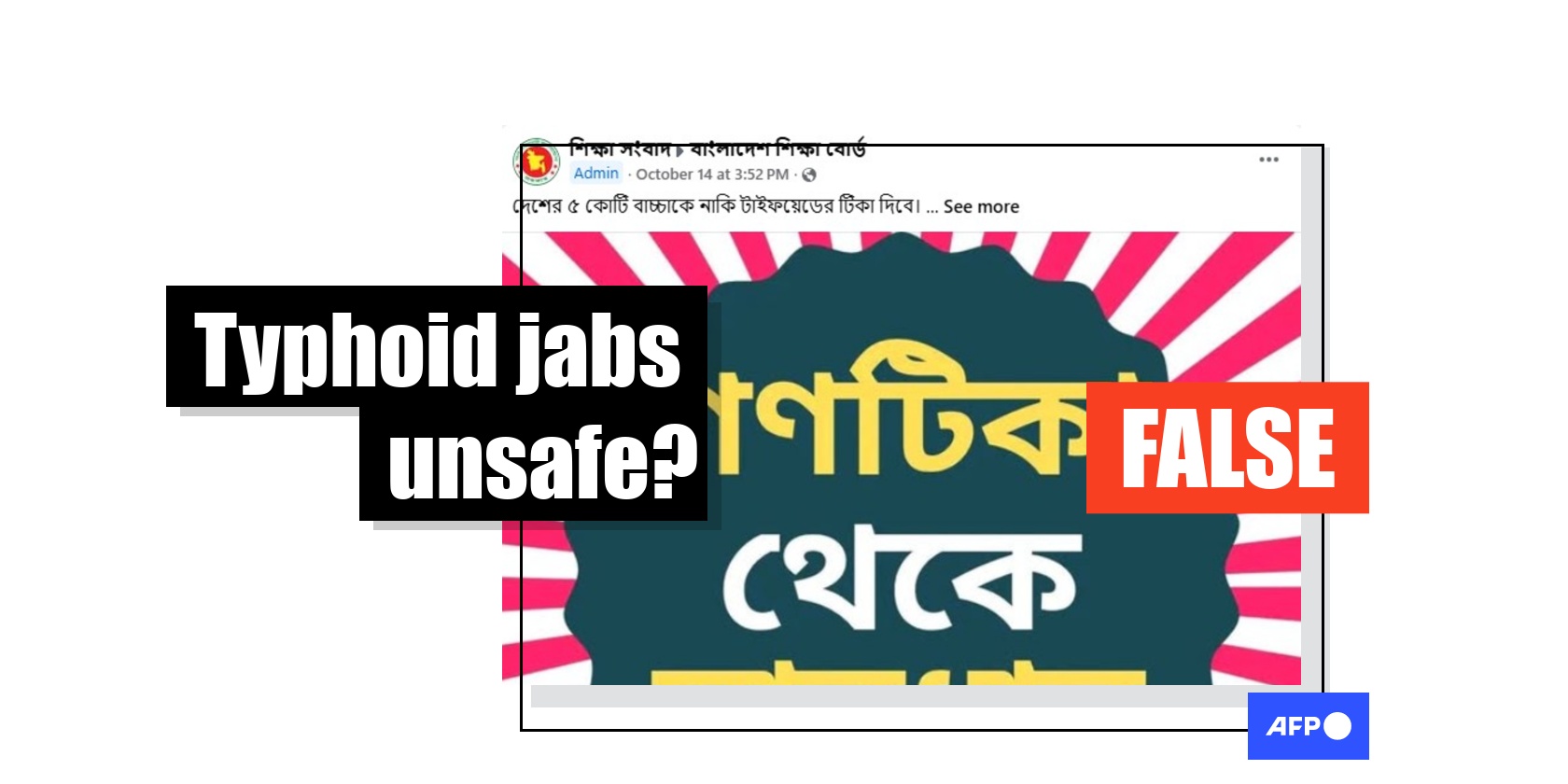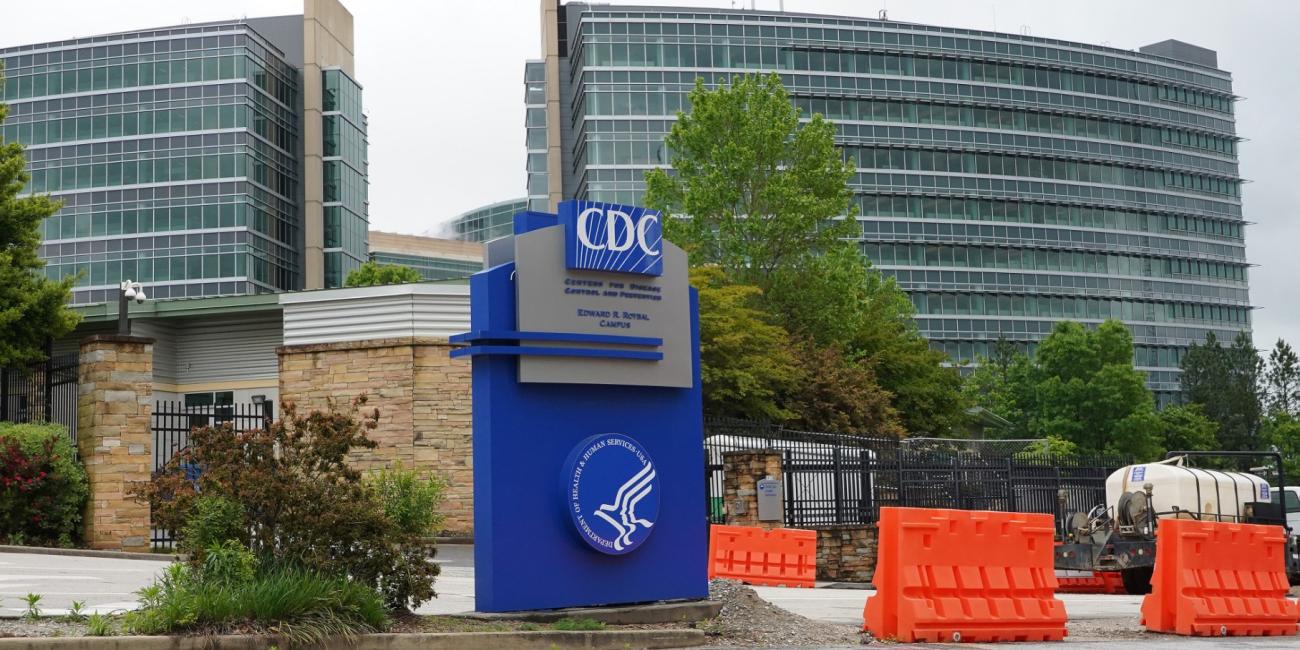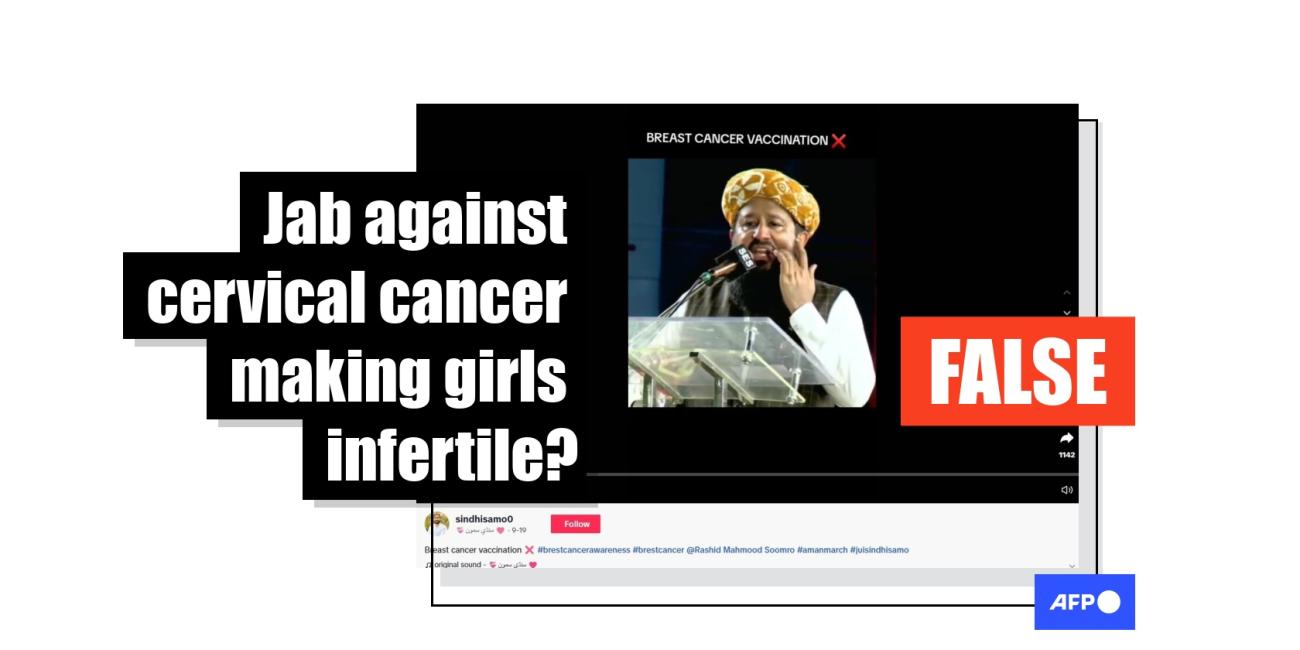
Baseless claims target Bangladesh's typhoid vaccine drive
- Published on November 7, 2025 at 08:05
- 3 min read
- By Rasheek MUJIB, AFP Bangladesh
A UNICEF health manager says disinformation about typhoid vaccines administered to children in Bangladesh is slowing down a nationwide drive to inoculate them against the potentially deadly disease. The posts falsely claim the typhoid jab used in Bangladesh introduces "the germ of that disease" into the body, but an infectious diseases expert said the vaccine uses a non-risk virus that mimics the characteristics of the typhoid-causing bacteria to create an antibody. The WHO also says the typhoid vaccine campaign is a "highly safe, and effective solution to prevent premature death".
"I would request parents, do not let this free vaccine enter your beloved child's body at all. Stay away from these," reads part of a lengthy Bengali-language Facebook post shared on October 14, 2025.
The post, which was shared more than 3,000 times, goes on to say: "The vaccine is a part of the germ of that disease, which is introduced into the body in the name of vaccination."
It goes on to say the vaccine's side effects are unknown, and questions why the jabs are necessary if typhoid fever has a cure.

Similar claims surfaced elsewhere on Facebook days after the Bangladesh government launched a drive to inoculate roughly 50 million children aged 9 months to under 15 years against typhoid fever, a vaccine-preventable infectious disease caused by the Salmonella typhi bacteria (archived link).
Children account for nearly 68 percent of deaths from the disease in the South Asian country and, according to the Gavi Vaccine Alliance, typhoid fever remains a significant public health threat there as well as other low-income countries.
Bangladesh has previously enjoyed a high rate of success in other vaccination drives against polio -- it was certified free of the virus in 2014 (archived link). In 2024, it also achieved a 93 percent rate of inoculation among eligible girls against the human papilloma virus (HPV), which can lead to cervical cancers (archived link).
But the posts triggered fears about the safety of the Typhibev typhoid conjugate vaccine used in the drive (archived link).
"If this is the case, then why don't the government ban it officially? Don't confuse the common people again," one user said.
Another commented: "It’s true, no one in my family got vaccinated."
Riad Mahmud, a health manager for the UN children's agency UNICEF who was in the field as part of the vaccination campaign, told AFP that disinformation about the jabs spreading on social media has lowered the rate of uptake in urban areas compared to more rural zones.
In the capital Dhaka, Mahmud said the rate was 70 percent compared to 85 percent in rural areas.
"The lower rate in the city is due to the negative campaigns on social media, the posts confused many parents," he said on November 5.
The vaccine, however, has been deemed safe by the World Health Organization, and contrary to the circulating posts was not made with the Salmonella typhi bacteria.
Safe, effective solution
The Typhibev vaccine received pre-qualification from the WHO in 2020. According to a WHO Public Assessment Report, "the safety profile of the vaccine was assessed to be satisfactory" (archived link).
A UNICEF press release also quoted the WHO representative to Bangladesh Dr Ahmed Jamsheed Mohamed as saying typhoid conjugate vaccines are "a single-dose, highly safe, and effective solution to prevent premature death" (archived link).
Moreover, infectious diseases expert Dr Tajul Islam Bari told AFP on October 28 that the Typhibev vaccine is also not made using the Salmonella typhi bacteria. The vaccine instead uses a non-risk virus, Citrobacter freundii, with similar characteristics to create an antibody.
The former programme manager for Bangladesh's Expanded Programme on Immunisation (EPI) also explained the necessity of typhoid vaccinations.
"The virus has mutated now, since our lifestyle makes us consume different medications -- often without completing the suggested course; our bodies are more antibiotic resistant now, which means oral medication doesn't always work in many cases."
A package insert for the vaccine available on the WHO website says common adverse reactions to the jab could include pain, swelling and redness at the injection site, as well as general fatigue and fever (archived link).
AFP has previously debunked similar false claims that have marred vaccination drives.
Copyright © AFP 2017-2025. Any commercial use of this content requires a subscription. Click here to find out more.
Is there content that you would like AFP to fact-check? Get in touch.
Contact us




